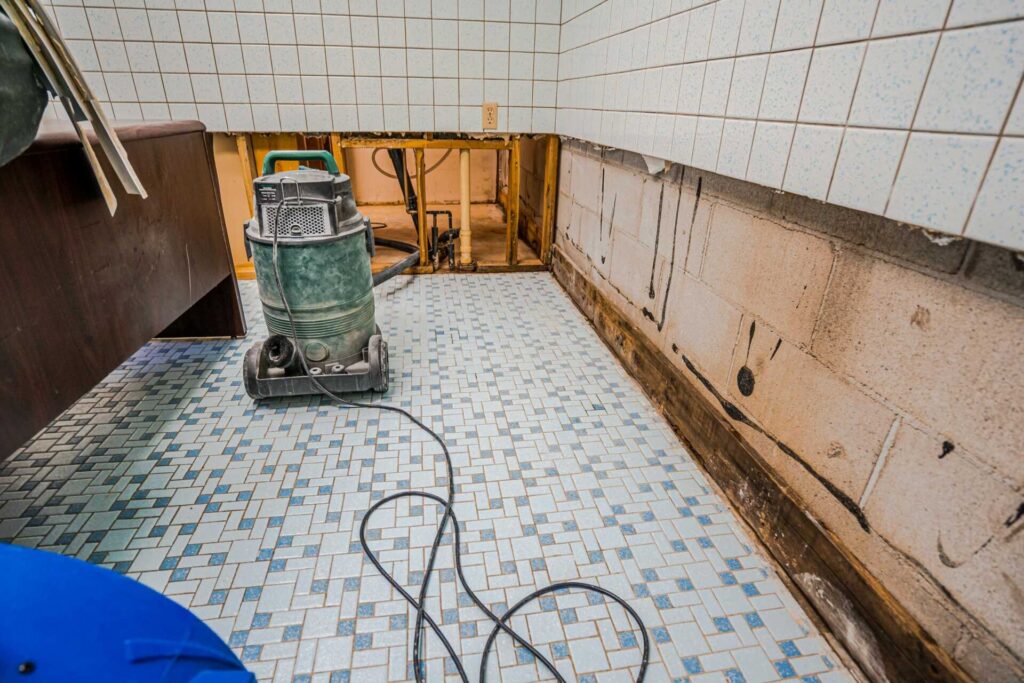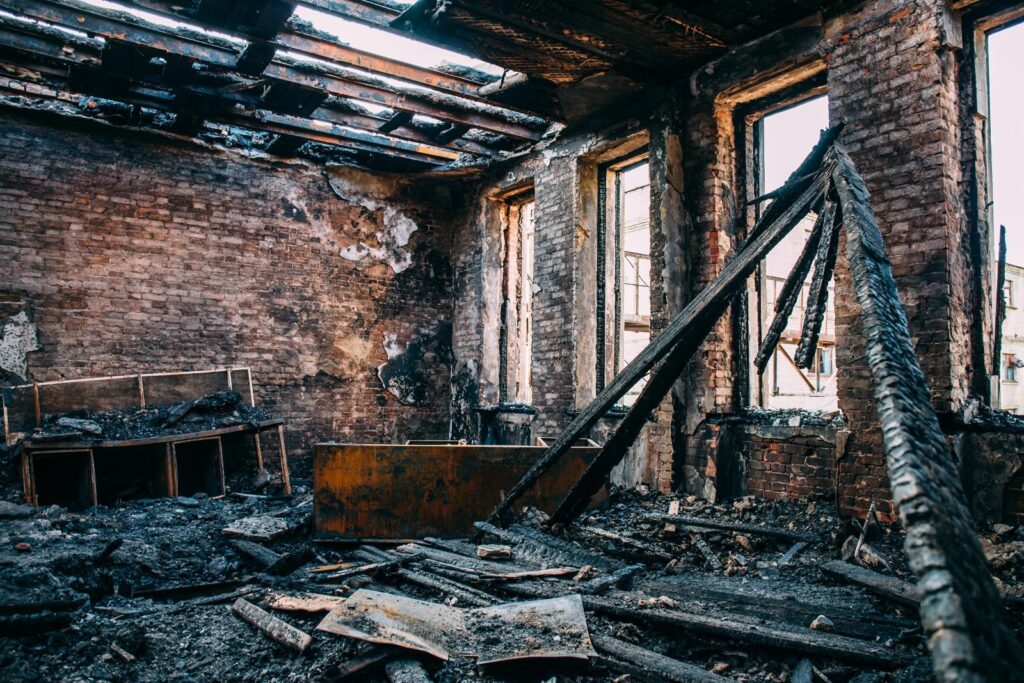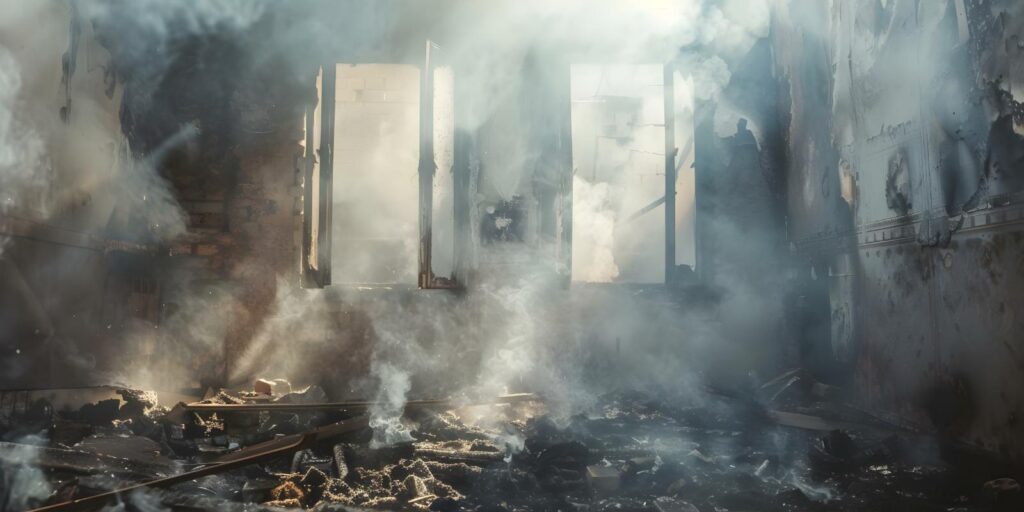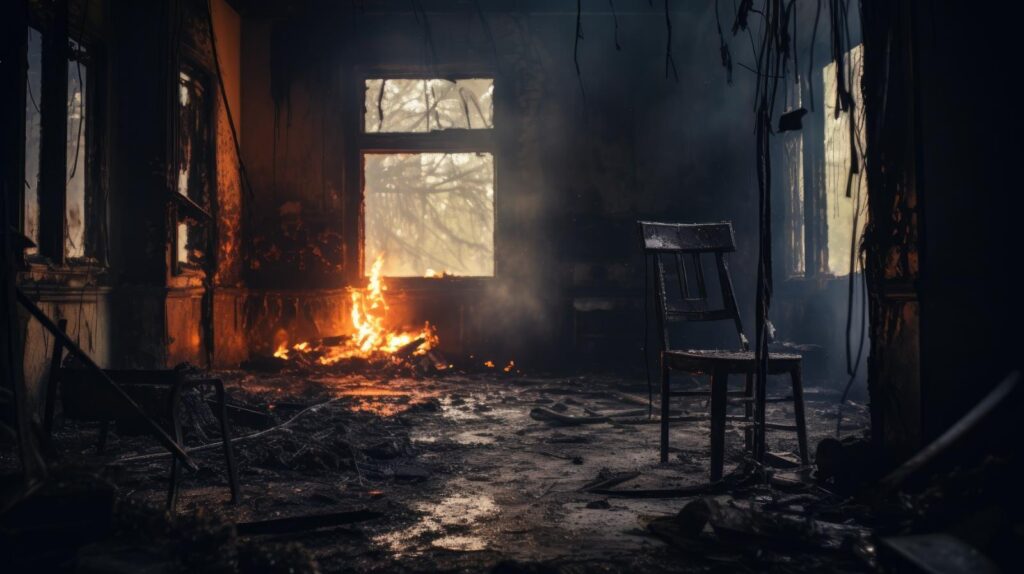
Contents
Imagine your home as a delicate ecosystem; when water invades, it disrupts the balance, much like a sudden storm tearing through a peaceful landscape. You might think that all you need is time for everything to dry, but that approach can lead to hidden mold and structural damage, threatening your sanctuary’s integrity. So, why settle for less when effective restoration techniques can ensure a swift recovery? The choices you make now can determine the future health of your home and family. What strategies will you explore to safeguard your space?
Key Takeaways
- Effective water damage restoration techniques minimize structural damage and prevent costly repairs by addressing issues quickly and efficiently.
- Rapid response and advanced equipment reduce drying time, mitigating the risk of mold development and health hazards.
- Professional restoration services utilize specialized skills and technology, ensuring thorough extraction and sanitation of affected areas.
- Comprehensive cleanup processes enhance recovery of damaged items, preventing future issues and ensuring a safer environment.
- Engaging experts streamlines insurance claims, maximizing benefits and providing community support during recovery efforts.
Understanding Water Damage Types
How can you effectively tackle water damage if you don’t understand its various types? Recognizing the different classifications of water damage is crucial for implementing the right restoration techniques.
Water damage typically falls into three categories: clean water, gray water, and black water. Each type has distinct origins and requires specific responses.
Clean water comes from sources like broken pipes or rain, posing minimal health risks. However, it can still lead to significant structural damage if not addressed promptly.
Gray water includes water from appliances like washing machines containing contaminants that may cause illness.
Lastly, black water originates from sewage backups or flooding, introducing harmful pathogens and toxins that could jeopardize your health.
When dealing with flood damage, it’s vital to assess the situation quickly. Floodwater can contain debris and pollutants, which makes it imperative to wear protective gear during cleanup.
Sewage backup, a particularly hazardous type, often requires professional intervention due to its health risks. You’ll want to ensure the area is thoroughly sanitized and any affected materials are properly disposed of.
Importance of Quick Response
Understanding the types of water damage lays the groundwork for addressing the situation effectively, but time is of the essence once a leak or flood occurs. A quick response can significantly mitigate the extent of damage to your property. When water infiltrates your space, it doesn’t just threaten structural integrity; it also creates an environment ripe for mold growth and other harmful bacteria. This is why implementing effective emergency readiness is crucial.
When you’re faced with water intrusion, having established response protocols can streamline your actions and minimize damage. First, assess the situation swiftly—identify the source and shut off any water supply if possible. This immediate action can prevent further water accumulation and reduce the risk of extensive damage.
Next, contact a professional water damage restoration service. Their expertise and rapid mobilization can mean the difference between recovering your property and facing costly repairs. These professionals follow established response protocols tailored for various scenarios, ensuring that the specific needs of your situation are met promptly.
Moreover, engaging with your local community’s resources can enhance your emergency readiness. Familiarize yourself with nearby restoration services and their contact information before an emergency strikes.
By taking these proactive steps, you reinforce your ability to respond quickly and effectively to water damage incidents, fostering a sense of security and belonging within your community.
Advanced Extraction Methods
When it comes to advanced extraction methods, you’ll find that powerful pumping solutions are critical for removing large volumes of water quickly.
These pumps can efficiently handle everything from minor leaks to significant flooding, ensuring a swift response.
Additionally, innovative drying equipment complements these pumping solutions by targeting residual moisture, speeding up the restoration process.
Powerful Pumping Solutions
Effective water damage restoration relies heavily on powerful pumping solutions, which are crucial for the rapid extraction of standing water. When you face a water damage situation, having access to high-capacity pumps can significantly enhance your water removal process. These pumps are designed to handle large volumes of water quickly, ensuring that your property remains safe and structurally sound.
To maximize pumping efficiency, consider utilizing submersible pumps, which work effectively in flooded areas. Their ability to operate underwater allows for more thorough extraction, leaving less residual water behind.
Additionally, truck-mounted extraction systems can be a game-changer in extensive flooding scenarios. These powerful units can remove water faster than portable options, reducing the risk of secondary damage.
Furthermore, combining multiple pumping solutions can create a more robust water removal strategy. By leveraging a mix of portable and fixed systems, you ensure that every corner of the affected area is addressed.
Innovative Drying Equipment
Utilizing innovative drying equipment is essential for achieving optimal moisture removal after water damage. The right drying solutions can significantly reduce the risk of mold growth and structural damage, ensuring your environment remains safe. With advanced extraction methods, you can effectively address water issues in a fraction of the time.
Here’s a quick overview of innovative technologies and their benefits:
| Technology | Description | Benefits |
|---|---|---|
| High-velocity Fans | Circulates air rapidly to speed up drying | Reduces drying time, enhances evaporation |
| Dehumidifiers | Extracts moisture from the air | Prevents mold growth, maintains air quality |
| Infrared Drying Systems | Uses heat to penetrate materials | Targets hidden moisture, improves efficiency |
| Moisture Meters | Measures moisture levels in materials | Ensures thorough drying, prevents oversights |
Effective Drying Techniques
To effectively dry out water-damaged areas, you’ll need to utilize advanced equipment such as dehumidifiers and air movers to expedite moisture removal.
Additionally, employing moisture detection methods, like thermal imaging and moisture meters, ensures you identify hidden damp spots that could lead to further damage.
Together, these techniques form a comprehensive approach to successful drying.
Advanced Equipment Usage
When tackling water damage restoration, the right equipment can make all the difference in achieving optimal drying results.
Advanced technology enhances the drying process and ensures efficiency improvement at every step. Here are three essential tools that you’ll want to consider:
High-velocity air movers: These units circulate air at an impressive speed, promoting faster evaporation and preventing mold growth. When positioned strategically, they can significantly reduce drying time.
Dehumidifiers: Advanced dehumidifiers extract moisture from the air, lowering humidity levels and creating an environment conducive to effective drying. Their ability to work in tandem with air movers amplifies their efficiency.
Infrared cameras: These devices help you identify hidden moisture pockets within walls and ceilings. By pinpointing areas needing extra attention, you can enhance your restoration efforts and prevent future issues.
Moisture Detection Methods
Identifying moisture levels accurately is vital for effective drying techniques in water damage restoration. To achieve this, you should employ advanced moisture detection methods such as thermal imaging and humidity sensors.
Thermal imaging cameras allow you to visualize temperature differences, helping you pinpoint damp areas behind walls or under floors that may not be visible to the naked eye. These cameras detect infrared radiation, enabling you to identify moisture pockets and assess the extent of water damage quickly. By understanding where the moisture is concentrated, you can prioritize drying efforts and prevent further damage.
Humidity sensors, however, measure the moisture content in the air and materials. Placing these sensors strategically throughout the affected area lets you monitor humidity levels in real time. This information is crucial for determining when the space has reached an optimal drying state, ensuring that you don’t stop the drying process prematurely.
Combining thermal imaging with humidity sensors provides a comprehensive approach to moisture detection. By using these effective methods, you can enhance your water damage restoration efforts, ensuring a thorough and lasting resolution for affected spaces.
Mold Prevention Strategies
Mold can develop within just 24 to 48 hours after water damage occurs, making prompt action essential for prevention.
To effectively combat mold growth, you need to implement key prevention measures immediately after identifying any water damage. Here are three critical strategies to keep your space safe and healthy:
Dry Wet Areas Quickly: Use dehumidifiers and fans to reduce moisture levels. Ensure all affected surfaces are dried thoroughly, especially in areas like basements and bathrooms where humidity tends to linger.
Seal Off Vulnerable Spots: Inspect your home for leaks or areas where water can seep in. Apply caulk or weather stripping around windows, doors, and plumbing fixtures to create a barrier against moisture intrusion.
Maintain Proper Ventilation: Ensure that your home is well-ventilated. Open windows when possible and use exhaust fans in kitchens and bathrooms to facilitate airflow. This helps decrease humidity levels and reduces the chance of mold settling in.
Comprehensive Cleanup Processes
Although water damage can be overwhelming, implementing a comprehensive cleanup process is crucial to restoring your space effectively.
Start with a comprehensive assessment to gauge the extent of the damage. This step involves inspecting all affected areas, including hidden spaces like behind walls and under floors. Identifying the source of the water intrusion is essential to prevent future issues.
Once you’ve assessed the situation, it’s time to extract the water. Use powerful pumps and vacuums to remove standing water quickly. The longer the water sits, the greater the risk of structural damage and mold growth.
After extraction, focus on drying the area thoroughly. You’ll need industrial-grade dehumidifiers and fans to ensure all moisture is eliminated.
Next, a thorough sanitization process is vital. Use appropriate disinfectants to clean surfaces and materials that the water has touched. This helps eliminate harmful bacteria and prevents unpleasant odors from lingering.
Pay special attention to porous materials, as they can trap moisture and contaminants.
Finally, evaluate and restore any damaged items. If certain belongings are beyond repair, it’s crucial to dispose of them properly.
Throughout this entire process, consider the emotional impact of the situation. Reassure yourself that regaining a safe and healthy environment is achievable.
Fire and Smoke Damage Link
Fire and smoke damage often complicates the restoration process, as both elements can leave behind hazardous residues and structural vulnerabilities.
In the fire aftermath, it’s essential to address smoke restoration effectively to safeguard your property and health. The byproducts of combustion can linger in your space, leading to potential long-term damage.
Consider the following three critical aspects of fire and smoke damage:
Soot Residue: The fine particles from burnt materials can infiltrate HVAC systems, making it vital to clean and replace filters to prevent recontamination.
Odor Penetration: Smoke can embed itself in walls, ceilings, and fabrics, creating persistent odors that standard cleaning methods often fail to eliminate. Specialized deodorization techniques are often necessary to restore a fresh environment.
Structural Compromise: Fire can weaken support beams and other critical structures, making it imperative to assess the integrity of your property. Identifying and addressing these vulnerabilities is crucial to prevent further damage.
Navigating through the complexities of fire and smoke damage requires a thorough understanding of these elements.
By prioritizing smoke restoration and addressing the implications of fire aftermath, you can enhance your restoration efforts and ensure a healthier, safer living environment.
Professional Restoration Services
When dealing with the aftermath of water damage, enlisting professional restoration services can significantly streamline the recovery process. These experts bring specialized skills and equipment to effectively assess the extent of the damage, ensuring that no hidden issues, such as mold growth, go unnoticed. With their comprehensive approach, you’ll benefit from a thorough inspection and tailored solutions that address your unique situation.
One critical aspect to consider is insurance coverage. Many restoration companies work directly with insurance providers, helping you navigate the often-complicated claims process. By collaborating with professionals, you can maximize your insurance benefits, reducing your out-of-pocket expenses. This partnership can make a significant difference in managing restoration costs, providing you with peace of mind during a stressful time.
Additionally, professional restoration services utilize advanced techniques and state-of-the-art equipment to expedite the drying and repair process. This minimizes further damage and helps preserve your belongings and property value. Their expertise ensures that the restoration is completed efficiently and effectively, allowing you to return to your daily life sooner.
Ultimately, choosing professional restoration services means you’re investing in a thorough and reliable recovery. You’ll also gain access to valuable resources and support, fostering a sense of community during a challenging experience.
Long-Term Solutions and Benefits
Implementing long-term solutions after water damage safeguards your property and enhances its value over time. By investing in effective restoration techniques, you’re not just addressing the immediate issues; you’re also promoting long-term sustainability.
Here are three key benefits you’ll experience:
Improved Structural Integrity: By using sustainable practices during restoration, you ensure that your property remains resilient against future water damage, preserving its structure and preventing costly repairs down the line.
Enhanced Indoor Air Quality: Utilizing advanced drying techniques and eco-friendly materials helps eliminate mold and mildew risks, leading to a healthier living environment for you and your loved ones.
Increased Property Value: Properties that have undergone thorough and sustainable restoration are often more attractive to potential buyers. Your commitment to long-term solutions reflects well on your home’s marketability, showcasing your dedication to maintaining high standards.
Embracing these long-term solutions means you’re not just reacting to damage; you’re proactively protecting your investment.
Sustainable practices in water damage restoration can reduce future risks and lower maintenance costs, creating a more resilient property. When you choose to prioritize long-term sustainability, you’re building a foundation for a safer and more valuable home.
This sense of belonging—knowing that you’re part of a community that values responsible living—can make all the difference in your homeownership journey.
Review
In the face of water damage, choosing effective restoration techniques is like wielding a shield against the storm. By acting swiftly and employing advanced methods, you protect your property and safeguard your health. Mold lurks in the shadows, but with comprehensive cleanup and professional expertise, you can banish it before it takes root. Investing in these solutions today means securing a safer, healthier tomorrow—transforming chaos into calm and restoring your space to its former glory.



